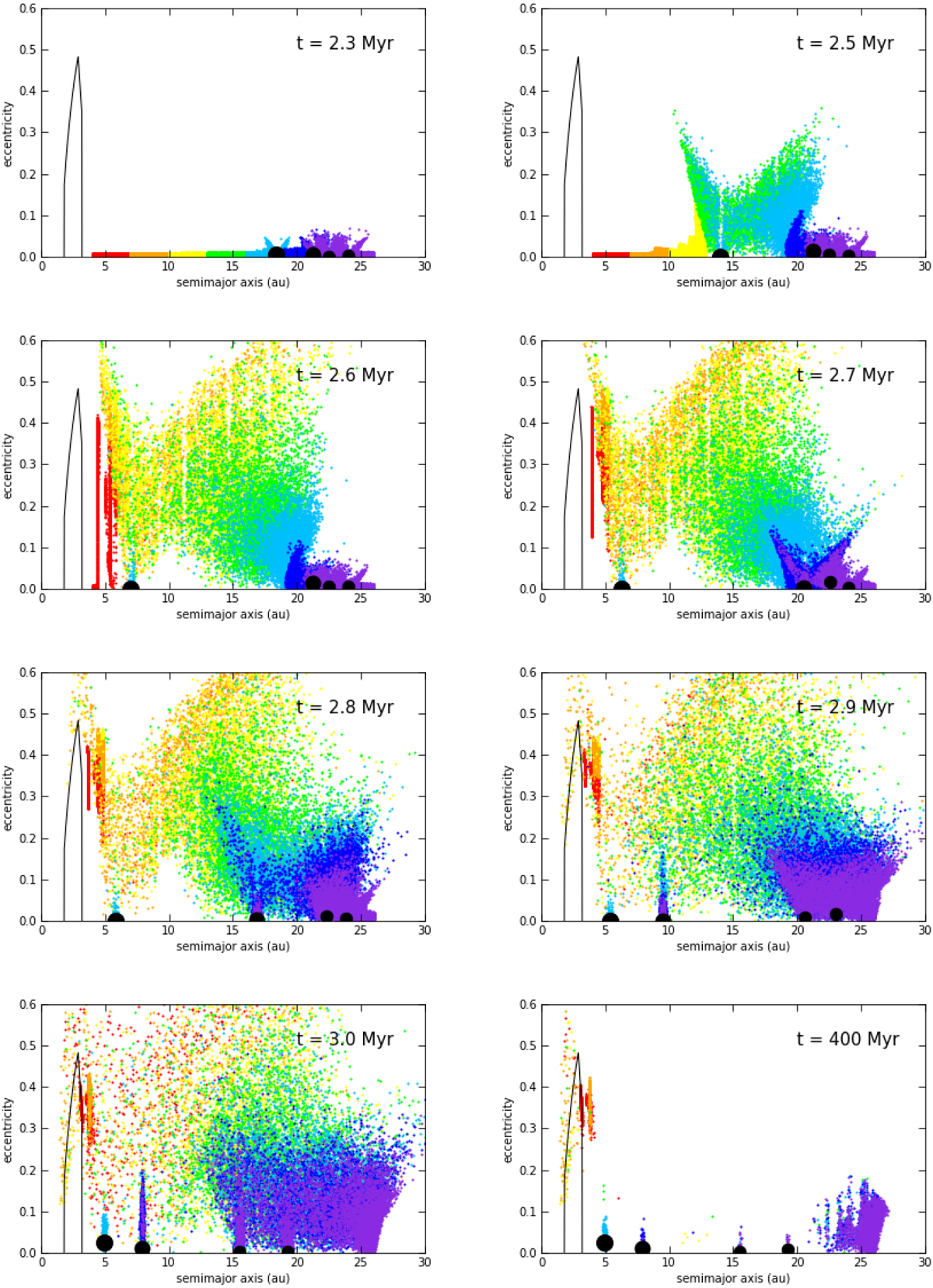Fig. 4

Eight time-snapshots of eccentricity versus semimajor axis of one of the nominal model simulations. The black line roughly delimits the main belt region. At t = 2.31 Myr, t = 2.56 Myr, t = 2.70 Myr and t =2.70 Myr, Jupiter, Saturn, Uranus and Neptune (black filled dots) start to grow and to migrate inward and stop at t = 3 Myr. A fraction of bodies that were initially placed between 4 and 16 au, are injected in the asteroid belt or possess enough eccentricity to cross the terrestrial planet region. Trojan asteroids are captured in the feeding zone of the planets’ cores and carried along during the migration. Each of the four planets captured Trojans, but, after t = 400 Myr, Saturn’s, Uranus’s and Neptune’s are drastically reduced because of planetary interactions. Particles clump in the resonance 3:2 (the Hilda asteroids at roughly 4 au) and other populated resonances are shown in Fig. 6. A small population of centaurs orbits between Jupiter and Neptune.
Current usage metrics show cumulative count of Article Views (full-text article views including HTML views, PDF and ePub downloads, according to the available data) and Abstracts Views on Vision4Press platform.
Data correspond to usage on the plateform after 2015. The current usage metrics is available 48-96 hours after online publication and is updated daily on week days.
Initial download of the metrics may take a while.


